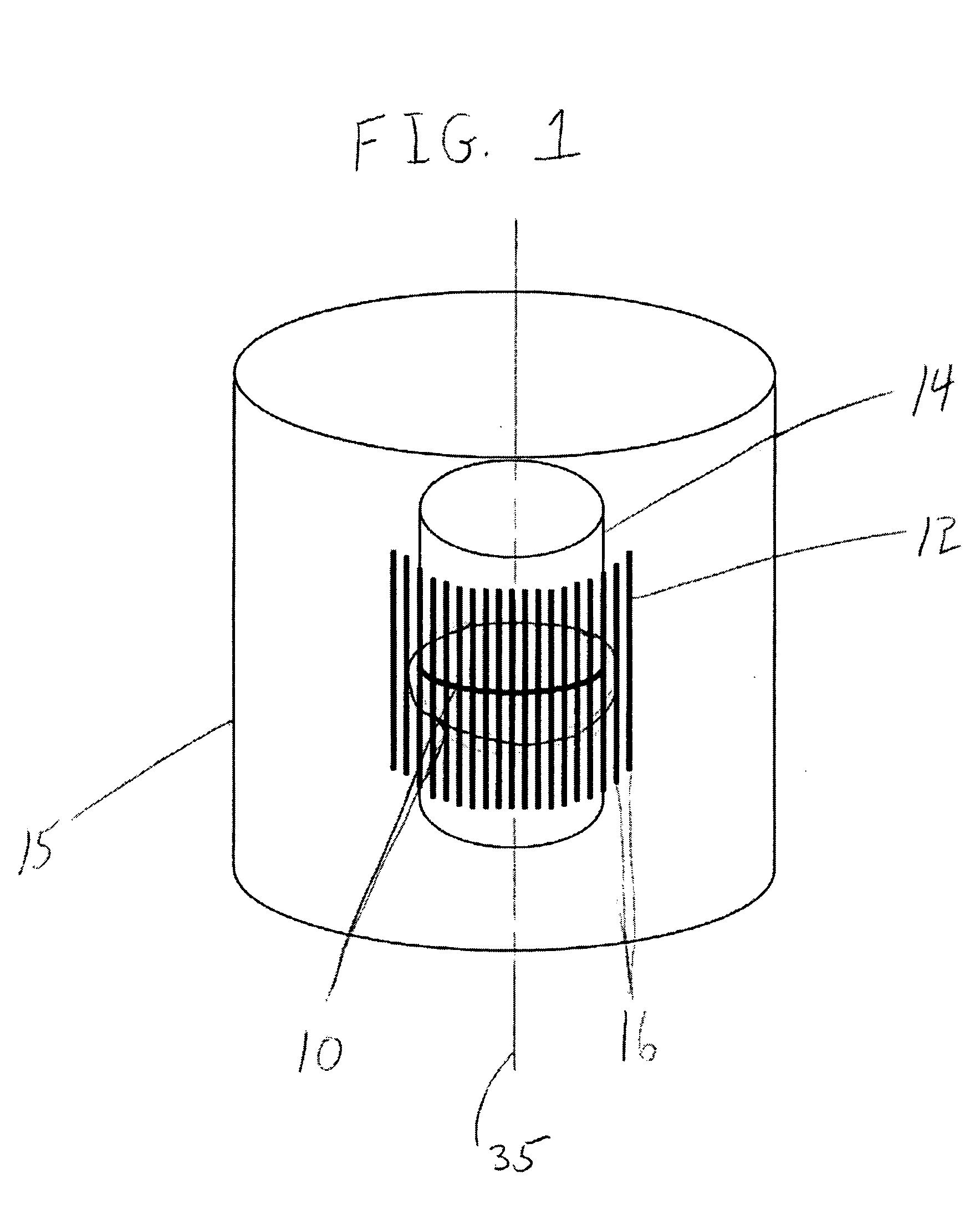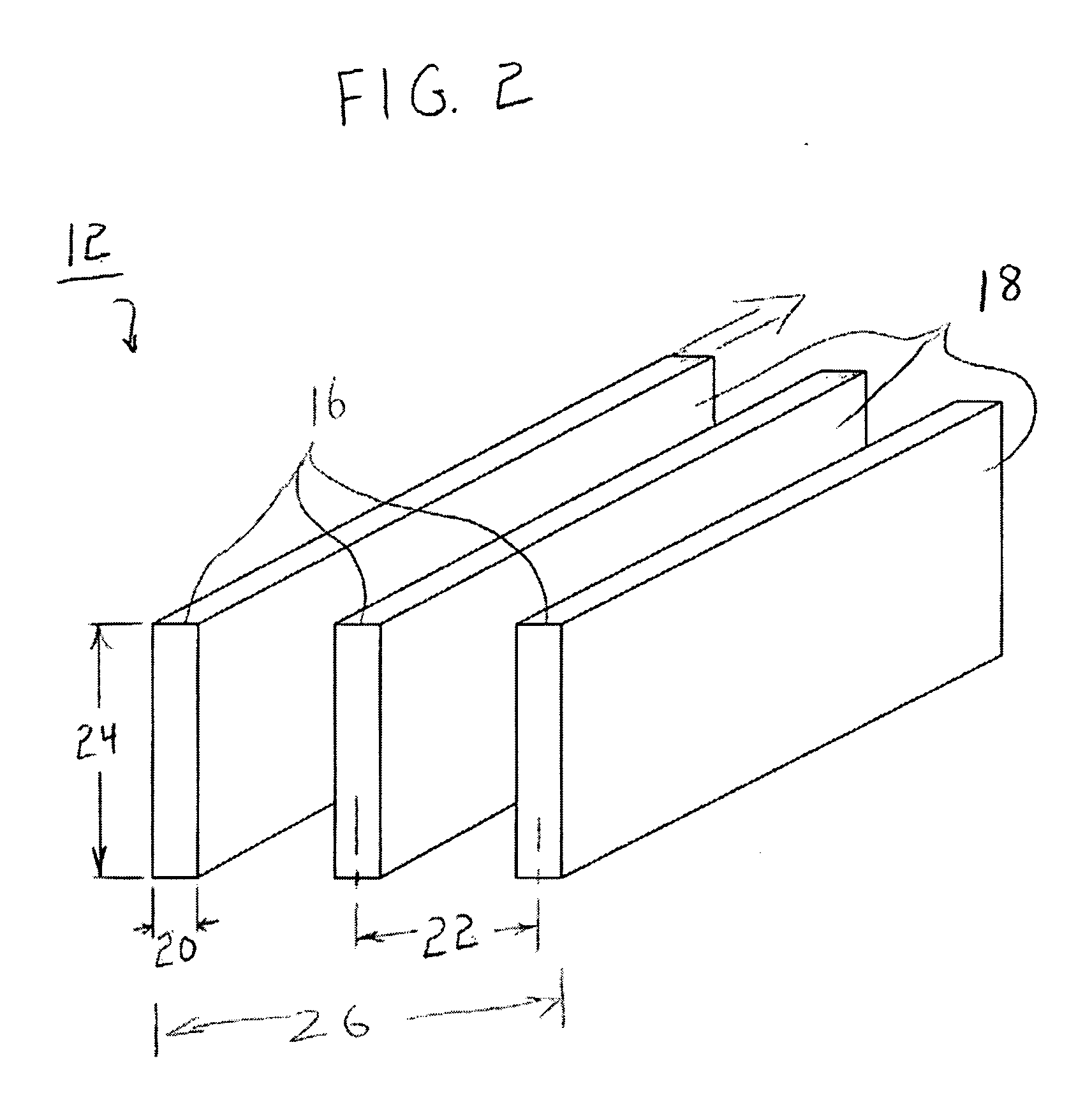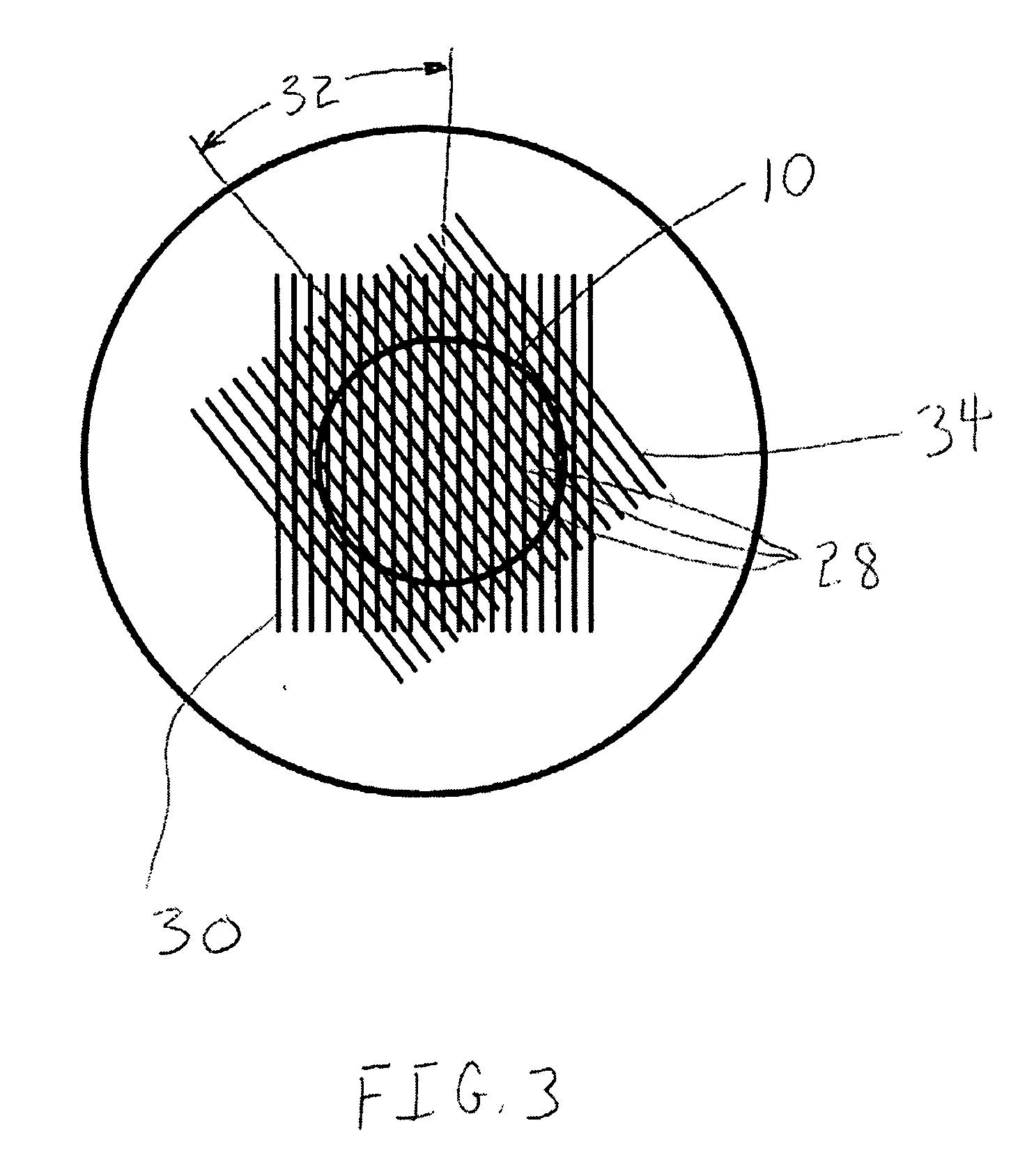Methods for assisting recovery of damaged brain and spinal cord using arrays of X-ray microplanar beams
a microplanar beam and array technology, applied in the field of assisting recovery of brain and spinal cord damage, can solve the problems of tissue cavitation and stroke-like events, permanent loss of neural activity, tissue collapse,
- Summary
- Abstract
- Description
- Claims
- Application Information
AI Technical Summary
Benefits of technology
Problems solved by technology
Method used
Image
Examples
Embodiment Construction
[0032] The present invention provides a method of assisting physiological, neurological, and functional recovery of a damaged spinal cord or brain by delivering a therapeutic dose of X-ray radiation to the injury site using microplanar X-ray beams. The method preferably inhibits or minimizes the formation of an astrogliotic or gliosis barrier at the site of injury and simultaneously promotes the regeneration and reconnection of axons. The in-beam therapeutic dose at the injury site, delivered by the microbeams, preferably operates to promote a less hostile environment in which the presence of growth inhibiting molecules and leukocytes is minimized and the recovery of the glial system and remyelination processes are encouraged.
[0033] Referring to FIG. 1, the present invention provides a method of assisting functional recovery of a damaged spinal cord or brain by irradiating an entire area of spinal cord or brain damage, i.e., the injury site 10, with at least one array of microplana...
PUM
 Login to View More
Login to View More Abstract
Description
Claims
Application Information
 Login to View More
Login to View More - R&D
- Intellectual Property
- Life Sciences
- Materials
- Tech Scout
- Unparalleled Data Quality
- Higher Quality Content
- 60% Fewer Hallucinations
Browse by: Latest US Patents, China's latest patents, Technical Efficacy Thesaurus, Application Domain, Technology Topic, Popular Technical Reports.
© 2025 PatSnap. All rights reserved.Legal|Privacy policy|Modern Slavery Act Transparency Statement|Sitemap|About US| Contact US: help@patsnap.com



